Maradona, and Napoli
@Asim Deb
In football, no man is bigger than the club. If one example could really challenge this logic, it is Diego Maradona and the city of Naples, unloved by Italy and ever the butt of the joke.
For seven long years in Naples, Maradona brought a whole city under his spell. He played for Napoli from 1984 to 1991, and in 1987, Napoli became the first Southern team to win any Italian title. Napoli also won the 1987 and 1990 Italian league titles, the Italian Cup in 1987 and the UEFA Cup in 1989.
Naples being Naples, there were extensive rumoursof mafia involvement in the transfer and illegal re-selling of tickets, demand had tripled overnight. Diego later wrote: “Before my arrival, Paolo Rossi had refused to join because, he said, Naples wasn’t a city for him, because of the mafia. The truth is, before my arrival, nobody wanted to go to Napoli”.
S.S.C. Napoli, the club founded on 1st August 1926, had never won any Italian Championship: 60 years with no victories were enough and the city needed somebody who could lead the club to the top of Italian and European soccer. With multi-million investment of businessman and politician Achille Lauro in the 1950s, they had brought the likes of Luis Vinicio (1955-60), Jose Altafani (1965-72) and Dino Zoff (1967-72) to Naples and had built up a huge fan-base without making much of an impression on the trophy front.The addition of former Ajax star Ruud Krol for a four-year stint in 1980 was another sign of the club’s ambition under President Corrado Ferlaino, but having reached the heights of fourth place in 1981-82, Napoli’s decline in Italy’s Serie A saw them slip into a relegation battle in the following years.
Then this man Diego Armando Maradona was signed for the club. With 24-year-old Maradona from Barcelona for a record £6.9 million fee (aided by local politician Vincezo Scoti, who used his connections with Italy’s banks to get Napoli a loan) would prove the just catalyst that Naples needed and 75,000 fans queued for hours and paid 1,000 lira for the privilege to see the Argentine. Earlier, no Southern Italy team had ever won any Scudetto, and Napoli was the first to beat the rich soccer teams from the North like Juventus, AC Milan, Inter and so on. (Juventus had won 22 titles, 12 had gone to Inter, Genoa had 9 whilst Bologna and Torino both recorded seven.)
Maradona who arrived at the Napoli club was far from the icon we know today. While his career at Barcelona and Boca Juniors had great moments he had also suffered of hepatitis, embarked down the path to cocaine addiction, and left Camp Nou under an almighty cloud after fighting the entire Athletic Bilbao team during the Spanish Cup final. When Napoli president Corrado Ferlaino arrived with a £7m world-record fee, the Catalans were only too happy to see him go. Back in 1984 the 1.3 million pesetas that the Italian club paid to Barcelona for Maradona was significant. From the moment Maradona was presented at Napoli’s Stadio San Paolo on 5 July 1984, it was as if the rebel had found a cause and the masses their messiah. 75,000 turned out to greet him. A local newspaper wrote that Naples did not have a “mayor, houses, schools, buses, employment or sanitation,” but that “none of these matter because we have Maradona”.
With Maradona in the team, progress was relatively slow with Napoli a distant eighth. The following season saw a third-placed finish for the Partenopei (a nickname for both club and city derived from Greek mythology, specifically the siren Parthenópē). But a team was forming, and they added Ciro Ferrara and Salvatore Bagni to protect the maestro, while attackers such as Andrea Carnevale and Bruno Giordano came in to complement him.
Before Maradona, no team from the country’s south had won Serie A. In 1985-86, Napoli would finish third. In 1986/87, Napoli did the doubles. The following season they finished second, with Diego top scorer in the league. In 1988/89 they took home the UEFA Cup. For a team that had been regarded as essentially a Serie B outfit, struggling to fill their stadium and with a meagre two Coppa Italias to its name, the rise had been unbelievable.
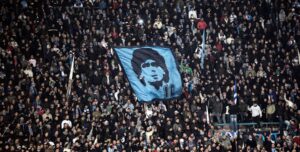
Maradona scored 31 goals in 60 games for Napoli in his first two years. The following season, the result was similar to that of Jorge Valdano and Jorge Burruchaga’s understanding with the No. 10 for Argentina and, clinched with a penultimate fixture draw with Fiorentina, Maradona’s 17 goals in 41 games led the side to the Serie A title; the first time that a team from the South had ever lifted it. The victory had been preceded by the number 43, Maradona’s number, coming up in the city lottery; and it came up again the following week alongside 61, the number of years Napoli had been waiting to win Serie A.
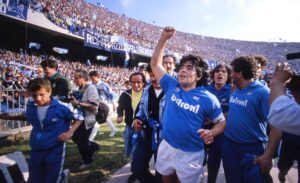
The following year saw Maradona’s 21 goals in 39 matches put Napoli in contention for the Scudetto once more, but a late season slump (which has since been rumoured to have been caused by a betting scandal) saw Milan pip them to the post. In 1988-89, Napoli would finish second in the league behind Inter, but defeated the likes of Juventus, Stuttgart and Bayern Munich on the way to winning the 1989 UEFA Cup. Maradona’s love affair with Naples turned sour after falling out with Ferlaino, but he was still able to lead the club to another Serie A title success in 1989-90 with 18 goals in 36 games. He eventually left Napoli in 1992 under a cloud of cocaine abuse, mob stories and bans for misconduct, but also as one of the most influential and inspiring footballers of all-time.
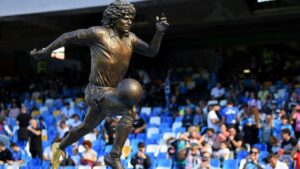
Naples is dotted with murals of its most famous adopted son.
“Diegomania” had arrived. Reports held that a quarter of all boys born in Naples were named Diego after the city’s new hero. Mock funerals were held for the former (northern) greats of the Italian game and graveyards were daubed with messages to the dead: “You don’t know what you’re missing.” All was not rosy for Diego himself, but, as the goals kept flying in, that could be forgiven.
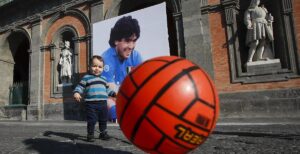
Maradona’s lifestyle issues were known at Barcelona, but given the freedom of Naples they spiraled out of control. He partied with camorra bosses and a paternity suit was brought against him by a local woman over a child that she had named Diego Armando. Mobbed by adoring masses around the clock, with acquaintances that bore more than a whiff of Naples’ famed underworld, and dealing with a major cocaine problem, he spent increasing amounts of time in Argentina, afraid of a city that loved him too much.
He returned late for the 1989/90 season – leaving his daughter and wife behind in Buenos Aires for their own safety, and back to his tasks. Napoli were neck and neck with AC Milan (who would go on to lift the European Cup), but the season turned on an incident away to Atalanta, where Brazilian midfielder Alemao was struck by a coin. Though the game was 0-0 at the time, Napoli were handed a 2-0 victory by the Italian FA and would go on to win their second Scudetto by just two points.

Any doubts about Maradona’s brilliance had been laid to rest. Once again he was the darling of Naples, the only man who could deliver them the title. Outside the city he was still vilified, characterised as a camorra affiliate and a cokehead, but to Neapolitans, accustomed to the scorn of the wealthier north, this only made them love him more.
There was, however, one more mountain to be scaled. Italia 90 loomed. Argentina, the holders, boasted not only Maradona, but also Abel Balbo, Claudio Caniggia and Roberto Sensini, who all played their club football in Italy. Despite a shock early loss to Cameroon, the Argentines overcame the Soviet Union, Brazil and Yugoslavia to set up a semi-final with the hosts. The venue, of course, would be Naples.
Maradona, as only Maradona could, appealed to the locals to support him and Argentina above the Azzurri. His message to the city was clear: ”For 364 days out of the year, you are considered to be foreigners in your own country; today you must do what they want by supporting the national team. Instead, I am a Neapolitan for 365 days out of the year.” In Diego’s mind, he had taken Naples on his back and carried them, but as the teams walked on to the field the banner on the curva read: “Maradona, Naples loves you, but Italy is our country”. Argentina won on penalties and the Neapolitans, though devastated, applauded Diego off the pitch.
That Maradona made himself close to Naples that he could demand their allegiance above their home nation is testament to what he had done for the city. That they chose the Azzurri over him showed that the shirt and the flag remained bigger than the man – just.
After 1990, their relationship would only go downhill. Maradona was overweight, facing a litany of fines for missing matches and, finally, he succumbed to the positive drug test that had been in the post for a while.
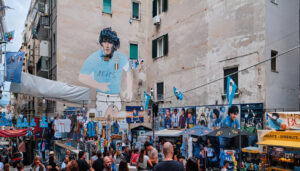
El Diego would never be the same again. He has returned infrequently to Naples, again fearful of what awaits him there, although this time it is in the form of the taxman rather than the camorra. When he returns, however, he is feted to the rooftops, his legend preceding him every step of the way. In his long absences, his face still marks the city, from the murals on the walls to the sky blue number 10 shirt of Napoli. Unable to shrink to fit inferior players, it was retired in El Diego’s honour, never to be worn again.
With North-South tensions in Italy at a peak due to a variety of issues, not least the economic differences between the two, journalist Ciaran Kelly wrote that the Argentine “perfectly represented the South’s socio-economic status with his humble origins” and 60,000 season tickets were sold ahead of his first season. But while “a season embellished and defined by Maradona’s goals, assists and energy” saw them finish eighth, the unlikely Scudetto claimed by Northern rivals Hellas Verona in 1985 was the spark that started the Neapolitans’ fire.
Yet Napoli are not the same team they were then, more painful years followed with relegation to Serie B coming in 1998 after a run of 32 years in the Italian top flight. Poor form almost saw them slip into the doldrums of Serie C in 2003 with only last day heroics saving the Partenopei from such a fate.
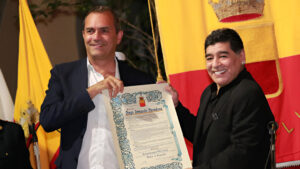
On 5th July 2017 Diego Armando Maradona received the honorary citizenship of Naples. Naples city council voted to give Mardona the keys of the city because of the “commitment and love” he showed the soccer-mad port city when leading its club to two Serie A titles in 1987 and 1990. “It will be a popular party for Diego” said Naples Mayor Luigi de Magistris. The first citizen said the honour was being conferred on the Pibe de Oro for “what he represented and still represents for the city”.De Magistris voiced the hope that “the fans will take part in the spirit of the event”.
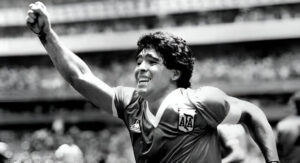
Sources:
ESPN,
The Guardian,
SportsVice,
ANSA, – Naples, June 27, 2017
http://www.espn.in/football/columns/story/_/id/1033038/rewind-to-1987:-maradona-brings-success-to-napoli
https://sports.vice.com/en_us/article/yp8b9b/our-darling-our-diego-how-naples-fell-in-love-with-maradona
http://www.marca.com/en/football/real-madrid/2017/02/13/58a0ed6f468aebef688b45f3.html
http://www.vivadiego.com/diegoena.html
https://www.theguardian.com/football/copa90/2017/may/11/diego-maradona-naples-napoli-fans-30-years-scudetto
http://theworldgame.sbs.com.au/article/2017/07/05/maradonas-wild-night-napoli
http://www.ansa.it/english/news/sports/2017/06/27/maradona-honorary-naples-citizen-july-5-4_7d6903b3-66bd-4ffc-9c81-6936e862598b.html
*******

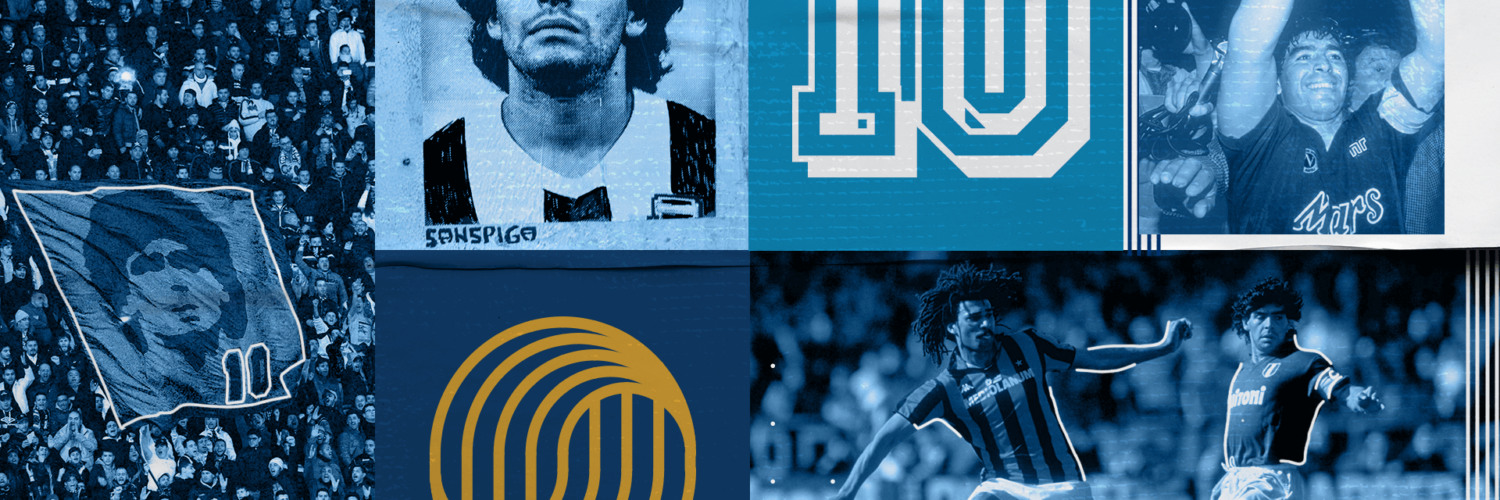

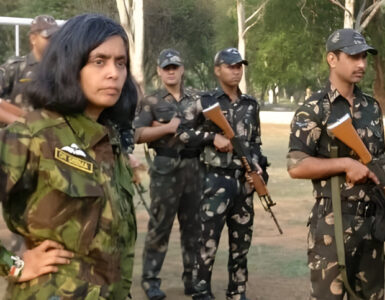
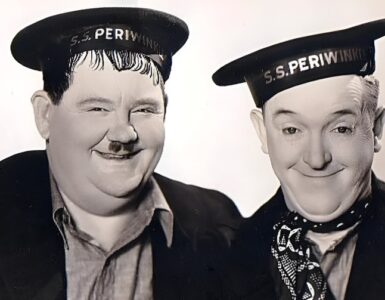









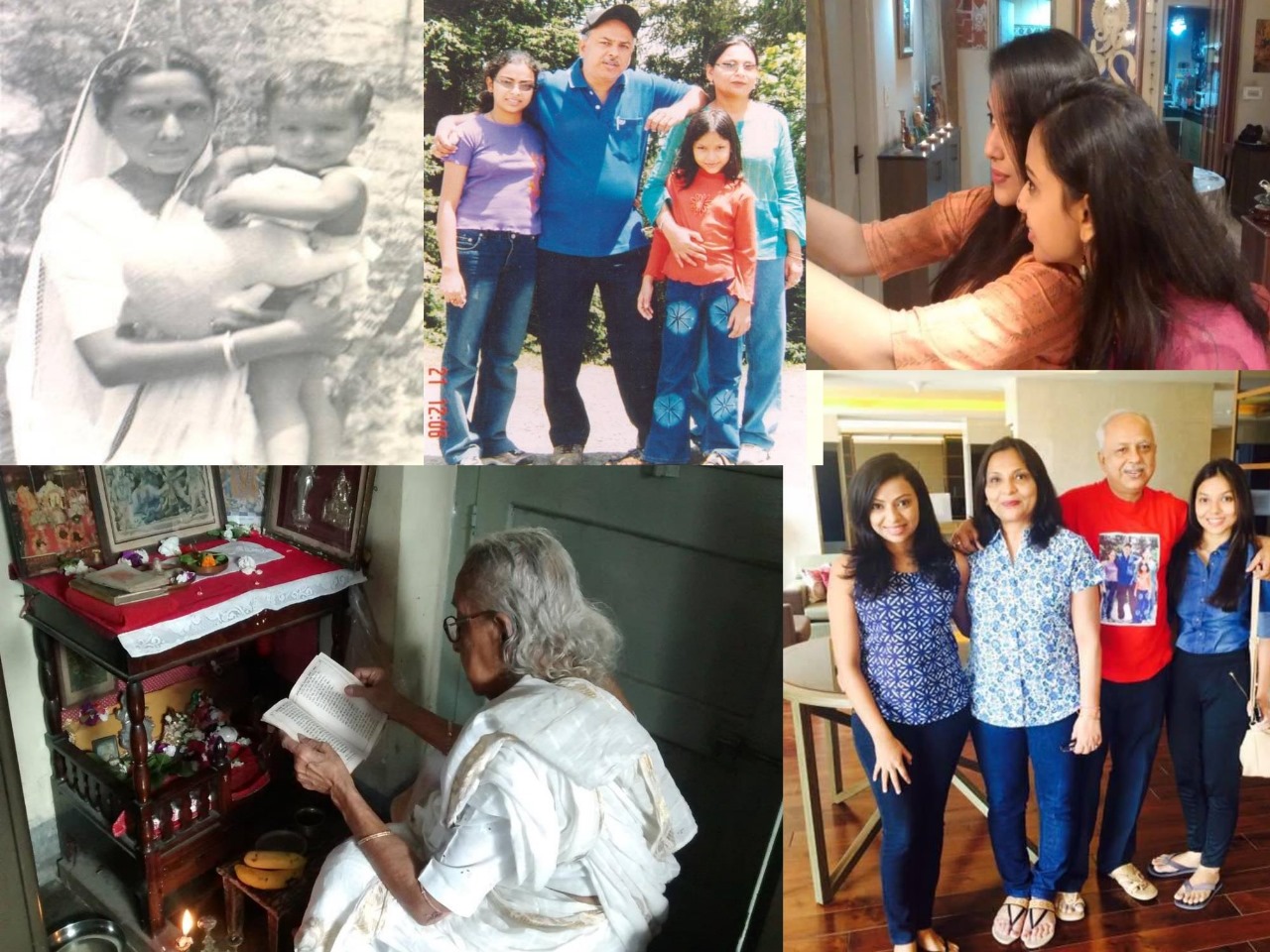
Making the most unknown third grade club to the top of world’s most challenging league, is not a joke, and only player like Maradona can do such miracle.
Lot of new things to know from this article.
Thanks for the author.
Excellent in-depth writing elaborating the greatness of Maradona, his relationship with a city and also his achievement as a footballer. Kudos to the writer.